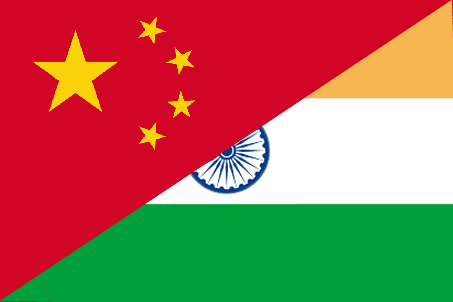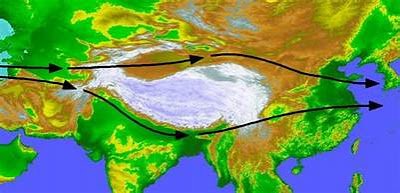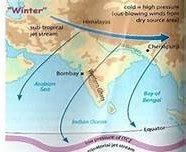 The Chinese military buildup is the most expansive seen since WW2 with the Chinese wanting to build the strongest military on earth. Weapon systems and capabilities being developed are awesome. Many in India and around the world are thinking – will India stand a chance in a conflict with China which is trying to match US? Prima facie it appears a walk over. However, it needs deeper analysis. At the outset, India and China are economic powers in this ‘Century of Asia’. Both are responsible nuclear powers with strong militaries. The chances of an armed conflict are remote. Almost nonexistent if one thinks sanely. However, the military buildup does not add up. While the Chinese proclaim a peaceful rise, they also talk of six wars they will have to fight in this century. An indication of this is the buildup and upgrade of airfields as also construction of blast pens in Tibet. A conflict with India to regain Arunachal Pradesh (South Tibet) is one such war. It almost came about in Doklam. In such context it would be pragmatic to analyze the matrix in which this conflict is likely to occur. That will tell us the shapes and contours of the clash. For purposes of this analysis we will discount the nuclear angle and look at conventional issues only.
The Chinese military buildup is the most expansive seen since WW2 with the Chinese wanting to build the strongest military on earth. Weapon systems and capabilities being developed are awesome. Many in India and around the world are thinking – will India stand a chance in a conflict with China which is trying to match US? Prima facie it appears a walk over. However, it needs deeper analysis. At the outset, India and China are economic powers in this ‘Century of Asia’. Both are responsible nuclear powers with strong militaries. The chances of an armed conflict are remote. Almost nonexistent if one thinks sanely. However, the military buildup does not add up. While the Chinese proclaim a peaceful rise, they also talk of six wars they will have to fight in this century. An indication of this is the buildup and upgrade of airfields as also construction of blast pens in Tibet. A conflict with India to regain Arunachal Pradesh (South Tibet) is one such war. It almost came about in Doklam. In such context it would be pragmatic to analyze the matrix in which this conflict is likely to occur. That will tell us the shapes and contours of the clash. For purposes of this analysis we will discount the nuclear angle and look at conventional issues only.
Posturing
Armed Forces of any nation exist for its defence. Hence Chinese PLA’s priority task would be to defend the front door – Han heart land, the rich Eastern Coast and assimilation of Taiwan under the One China Policy. Next it should focus on security of China’s global interests-political, economic and energy, promotion of its superpower ambitions plus its overseas assets. PLA adopts a defensive posture while applying an implied threat to execute its primary tasks. PLA will also focus on consolidation of the rear door – Xinjiang and Tibet. As an extension it could also seek to settle the unresolved border issue with India by regaining their claimed areas of Arunachal Pradesh (South Tibet) by force. Against India it would have to go on the offensive through an applied threat. It will need considerable forces for this, which will be at the expense of its priority tasks. Does it have enough? I doubt. I have analysed it earlier. On the other hand, India does not have expeditionary ambitions and will be defensive totally. Any offensive intent will be reactive to gain some real estate for a post conflict bargain.
Political Objectives and Resources
The political objective of any Chinese offensive into India is clear – annex Arunachal Pradesh by capturing it. If that is not feasible it will attempt to cut off Eastern India through the Chumbi Valley or link up with Pakistan in the north or capture a huge swathe of territory to give depth to its communication lines. These gains will be then used as bargaining chips to settle the issue in its favour. If this ploy must succeed, a major defeat of Indian Armed Forces is mandated with no quid pro quo ability. Thereafter, PLA will have to hold captured territory in strength in perpetuity unlike now where they are thin on ground. It is a great ask even for China. If it commits requisite forces and resources for this venture, it will leave its front door in Taiwan ajar. The Chinese were not dumb to get back to the Himalayan crest line in 1962, when they were at walkover stage and the entire Arunachal Pradesh and their claims were in their bag. The Chinese can talk of teaching India a lesson in a lesser skirmish. But that is another story.
Terrain
The Himalayas offer the highest terrain friction for Armed Forces in the world. Analysts glibly comment on the Chinese infrastructure upgrade in Tibet, their induction and the horizontal move capabilities. Excellent walk around for about 24 hours at 12000-14000 feet above MSL after full acclimatization. Reality will dawn on the fighting capabilities required. It took me four tenures and endless visits to high altitude to get over the mental and physical disorientation Himalayas causes. People glibly talk of Rapid Reaction Forces swooping in and capturing territory like Montgomery did in El Alamein. The High Altitude effect on commanders, troops, animals, weapons, ammunition, fuel, IC engines, generators, communications and other war resources is debilitating due to cold and lack of oxygen. Then these resources must be moved on winding and treacherous roads. The logistics is beyond normal thinking. After having administered an Infantry Division in high altitude in this very setting, I would love to see the Chinaman who can do it. Once induction is done, the fighting begins, and it must be sustained. After that, these hapless troops will have to stay put to hold the area. They must be sustained thereafter. Further, the Himalayan terrain is two toned as it is treacherous and unpredictable. The Tibetan Plateau is flat, stable and open. Permits use of Armour. However, there is no cover, and everything gets exposed. As you clear the crest line and traverse south, you will get into narrow wooded valleys, unstable soil conditions, poor visibility, poor deployment space. The contrast is as different from chalk to cheese. All these narrow valleys will split offensives. Chinese offensives will start concentrated and end up dissipated. Armour cannot be used south of Line of Control (LoC) barring a few places. When used, it will add to logistic problems. Largely battles will be with good old infantry and artillery. The Himalayas are ideal for defenders. Offensives require 9 or 6:1 force superiority against the well defended localities which India has. While China will have to fight through well-coordinated layered defences, China does not have a firm base of consequence and is vulnerable to a riposte. A clear differential is that IAF operates from air bases at about sea level and PLAAF must operate from bases in high altitude in Tibet. That is a restrictive dampener for PLAAF.
Sub-Tropical Jet Stream

A winter subtropical jet stream blows in the Himalayas from West to East as shown in the illustrations above. It overlaps the campaign area and season. Jet streams are cold tubes of air blowing at speeds varying from 30m/s to over 100m/s, with strong vertical wind shears, strong horizontal temperature gradients and areas of clear air turbulence. They are at heights of 9-10 km and the tube diameter could be up to 50km. These dimensions and exact locations are highly variable and unpredictable. Local turbulences add to this phenomenon. Jet streams are used by long haul jets to aid flight. However, short haul, high manoeuvre operational flying is another kettle of fish in a jet stream. Light weight UAVs will be extremely difficult to handle. They could be blown away. Missile control systems might not respond in such conditions. Missiles will become inconsistent and inaccurate. Combined with steep gradients on which targets are located, missiles could miss their targets altogether and often. So, all those fancy air operations are suspect in Himalayas in winter unless there is considerable air operational skill on both sides. The subtropical jet stream, incidentally, causes the northeast Monsoon.

Command and Control
Chinese have put all their forces under one Commander in Tibet after their recent reorganisation. That means all resources-intelligence, surveillance, weapon systems, troops and logistics are seamlessly welded together for deployment and employment against India. As against this the Indian command and control system is a disintegrated picture. With four Army Commands and three Air Force commands responsible in parts for the Tibet Border, there will be severe Inter Service friction at ground and HQ level. This thrives on a solid base of Intra Service friction. It gets amplified by Inter Force friction with paramilitary and other forces responsible for the Line of Actual Control (LAC) and border area development in peace time conditions. This is reinforced by inter-ministerial friction of the various intelligence agencies. Very often the Centre and States are not on one page. More often the Services and Ministry of Defence (MoD) are on different pages. The million-dollar question is that with so many varying perceptions, how can the Indian response be cogent? With India opting for the Chief of Defence Staff (CDS) finally, things could change. However, that depends on the mandate, leeway and political support given to him. Otherwise he will be another noise adding to the cacophony of the great Indian democracy.
Experience
The Chinese forces were never expeditionary in nature. After 1962, they never won a war. Even when they dominated and caused immense casualties to the Vietnamese, they ended up on the losing side. Initial aggression might not end with war termination on Chinese terms. The trade war is an example where aggressive trade policies are being beaten down by US. At the operational level, the PLA has not been bloodied since the Sino Vietnamese war. Theirs is a conscript Army which lacks war experience. Personally, I think they might be relying too much on technology and overhyping their capabilities. It might not work in the Himalayas in all probability. Being well equipped is one thing fighting is another thing. The Indian Armed Forces are battle hardened. All infantry and artillery units have had operational tenures in extreme high altitudes. Most have fought in all conflicts and wars thrust upon India. They have been in counter insurgency operations and constant skirmishes with Pakistan on the LoC. All these sharpen unit drills and battle spirit. It also trains commanders to think under operational stress. Indian Air Force has had plenty of operational flying experience in the Himalayas. Performance of IAF pilots in international exercises has been outstanding as acclaimed by other sophisticated Armed Forces. The PLA might be better equipped in comparison to the Indian Armed Forces. However, one must know how to fight to with such sophisticated equipment in very tough battle fields. Most importantly all their sophisticated equipment is also not tested in battle. Do not bet on Chinese equipment. They are as unreliable as their nuclear subs, whose reports of sinking keeps surfacing.
Surprise and War Outcomes
Surprise is a battle winning factor. The terrain in Tibet and the necessity to induct large forces into the conflict zone preclude strategic and operational surprise. Due to this, the Indian Forces will be well prepared. It will be a series of slogging battles fought over a long period of time for small pieces of territory. China would like a short sharp encounter to subdue India. However, the Chinese could be in for a surprise like at Doklam when India did the unimaginable. Stand up to China! If China sets out to capture its claimed territory and in attempting so if it achieves only limited success and if India stymies the main effort and gains some portions on the other side of the LoC, it will come down to a post-conflict bargain. That means their claimed areas might still be out of grasp apart from losing face and a setback to superpower ambitions. In addition, vulnerabilities would have developed in the China Seas. It will be a classic case of winning the Battle and losing the War like it happened with Vietnam. Am I pitching it too high? Relook at the Doklam story. A face saver had to be manufactured for China to exit honorably.
Best Bets
What is the best bet for China? The best bet for China would be to mount a small but significant grab action and show India down as a weak nation. However, that is a high-risk option if India does a maverick counter. All said and done India should prepare for this consciously. Are we ready across the Himalayas? What is the best bet for India? Hybridise the war through Tibet and Xinjiang. That will put China in a spin since it has no experience whatsoever of handling asymmetric actions. All one must do is look at Hong Kong and the muddling Chinese actions to prove my case.
Conclusion
Considering all factors and analysing them, conflict with India might not be favourable to China. So, what then is the future of a Sino Indian conflict. Bleak. What is expectable in future is China continuing to use Pakistan as its catspaw and further implying a threat through their incremental/ encroachmental actions in Nepal, Bhutan and Myanmar. The Chinese will keep the border issue simmering and tighten then String of Pearls. They will continue to make threateningly loud noises through their loud mouthpieces. India needs to counter this with improving its relations with its neighbours and coming down hard on Pakistan. Simultaneously it should strengthen the Jade Necklace. India will also do well if it modernises its Armed Forces. For this it will have to carry out a surgical strike on the MoD.
The 3rd War: “Reconquest” of Southern Tibet (Year 2035 to 2040)
China and India share a long border, but the only sparking point of conflicts between the two countries is only the part of Southern Tibet. China has long been the imaginary enemy of India. The military objective of India is to surpass China. India aims to achieve this by self-development and importing advanced military technologies and weapons from the……. ..If China uses military force to conquer Southern Tibet, it has to bear some losses. In my opinion, the best strategy for China is to incite the disintegration of India. By dividing into several countries, India will have no power to cope with China.
Of course, such plan may fail. But China should at least try its best to incite Assam province and once conquered Sikkim to gain independence, in order to weaken the power of India. This is the best strategy…..
Read more at:








